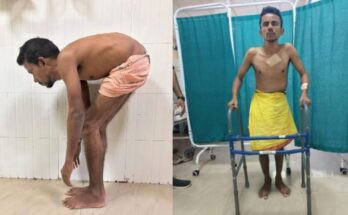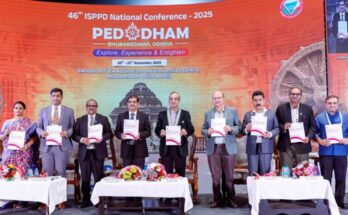New Delhi: As vital as the spine is for the body, problems occuring due to the sedentary lifestyle in lockdown have amplified manifold in the ongoing pandemic, says a spine expert.
According to Dr Samir Salvie – Consultant Orthopedic and Spine Surgeon, P. D. Hinduja Hospital and MRC, a complete change in routine activity in the early days lead to many chronic sufferers worsening their pain, as they were used to a certain activity level.
“Work from home has caused another pandemic, that of back and neck pain. Poor ergonomics and sitting on laptops all day has resulted in back issues for many professionals. Those who were used to such work had to sit in bad postures, and teachers and students had to get used to a totally new normal of sitting for hours staring at a screen. Additional house work due to lack of maids and helpers was another factor. Stress, fear and anxiety also led to increased focus on back pain, and worsening clinical conditions,” he told IANSlife.
Why the spine is important?
The spine is one of the vital structures in the body. It is a complex, yet wonderful mechanism, which allows us to stand, sit, lie down, bend and indeed take up many postures. It bears the weight of the body day in and day out. And yet, it has the even more crucial function of protecting the spinal cord and the nerves which go to all parts of the body.
Humans have developed the ability to stand erect and be on two feet as opposed to animals, and this simple act of evolution has led to extreme strain on this wonderful organ. What lends great support to the spine is the musculature of the back and abdomen, and this supports and moves the spine, sharing the loads and demands in varying degrees.
Why Spines are strained?
Further development in social and economic structure has lead to newer stresses on the spine. Nature did not mean for humans to sit in one place for hours on end, or indeed, stand. Nor did it really account for heavy labour of the industrial age, with construction and factory work. Least of all it did not factor in dietary fads and lack of activity leading to obesity and poor muscle strength, says Dr Salvie.
And hence back pain and back problems have become universal. Backache is one of the most common occupational disorders and comes second as a cause to taking a day off from work, causing a huge economic burden in addition to human suffering.
Preventing back pain
As in any disease, prevention is better than cure. If one has taken care of their back, any additional stress is less likely to cause a worsening. The spine is like a complex machine, and hence has to be cared for as you would if you possessed a very expensive object. As has been mentioned, the main support for the spine comes from the muscles of the back and abdomen. It is essential to keep these supple and strong. And this is accomplished with a proper exercise program. Even half an hour of stretching and strengthening exercise per day for back and neck will do wonders. These exercises are easily available on the internet, or in fact our ancient tradition of Yoga incorporates many of these useful postures.
Care of posture and good work habits is equally important. Sedentary workers must make sure that their sitting position and computers are properly placed. They need periodic breaks and stretches. Heavy laborers should use ergonomic methods of lifting and assist tools. Attention to pillows and mattresses is equally important. Bone health and nutrition should be looked after. Adequate calcium, Vitamins D and B12, proteins, all support strong bones, leading to reduced musculoskeletal problems. Finally, obesity is a major trigger for back pain, and controlling one’s weight would have a great positive impact.
Back pain remedies
Once you have back pain, it may be better to seek help from a local doctor. Depending on severity and duration, you may be prescribed medications, local ointments, fomentation and rest. The good news is that almost all back pains do tend to get better. A rehabilitative exercise programme and attention to correction of poor work habits will add to the recovery and prevent recurrence.
The word ‘Spine Surgery’ sparks great fear. However less than 1 percent of people with back pain require surgery. And if the time does come where surgery is the best option, newer techniques like keyhole and micro-surgery, and hi-tech equipment and infrastructure has made the these surgeries extremely safe, allowing patients to lead active and fruitful lives, the expert explains.




